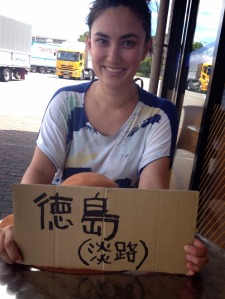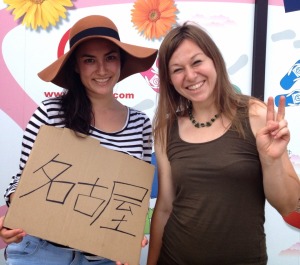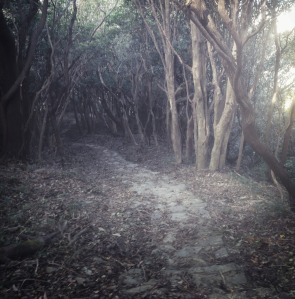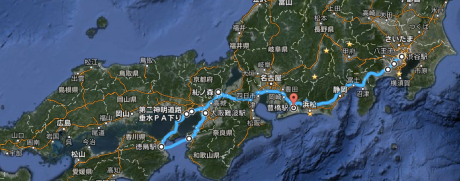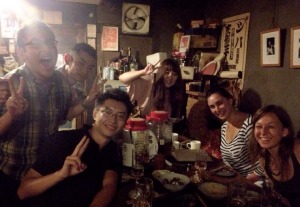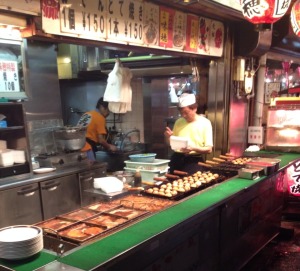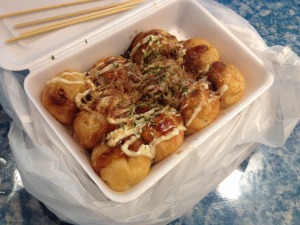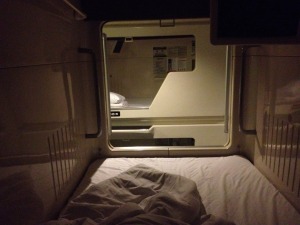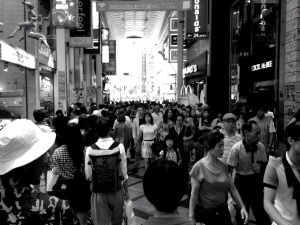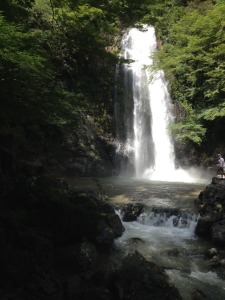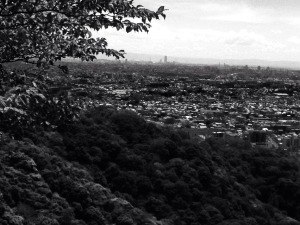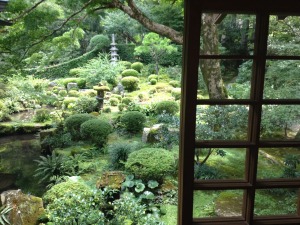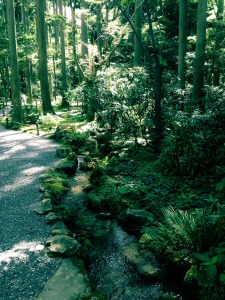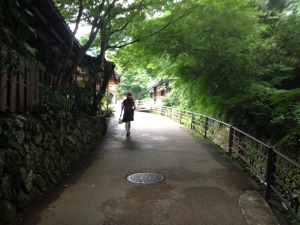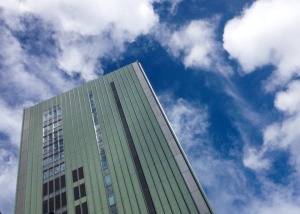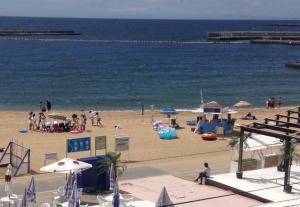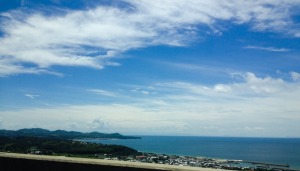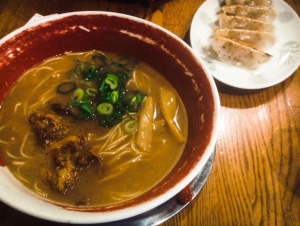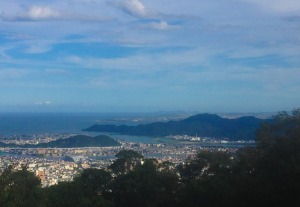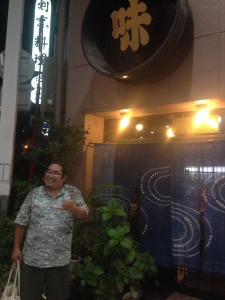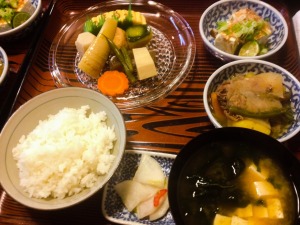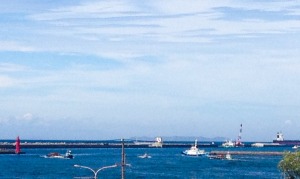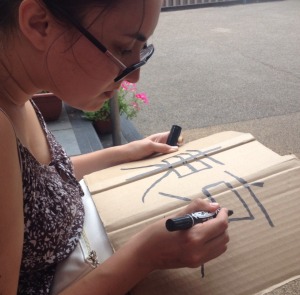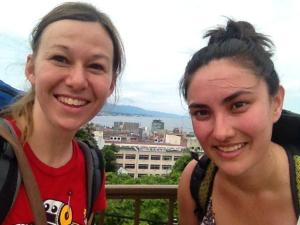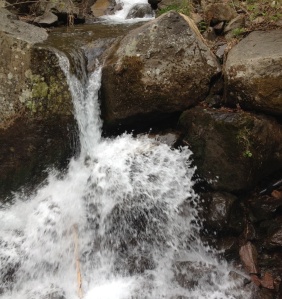Lost in the gray
November 9, 2018
Before me
Are the keys laid out
White and black
Like a world
With no moral questions
No gradient
Curiosity
Grips me with this task
I’m compelled
By a note
Hidden in this pattern
Of melody
Is it me?
The drive behind it
My feeling
To bring forth
What lies out there
Already
Inside me
An urge to arrange
Vibration
That’s in such need of
Discovery
Reincarnation
January 27, 2015
No matter how young
How old
Used
Naive
.
How troubled,
How hollow
Or Whole
.
No matter how much was achieved
Or lost
how pure
Or how sick
.
No matter how coldhearted
Or full of contempt
.
Whether enlightened
Or riddled with guilt
.
Atrocities.
.
All can be salvaged.
Repaired and reworked
Recycled.
.
The soul,
A broken ship
Pulled up,
Floats
.
Just to sink again.
Foraging through the human landscape
August 30, 2014
Hey, I just met you, and this is crazy…. but can I have a ride to Tokushima?
This was the proposition we had for all the customers who approached the Mini-Stop convenience store at the southbound Tarumi highway parking area just outside of Kobe. Sitting at a small table near the entrance, we propped up a piece of cardboard with 徳島 written on it. Just in case someone was only going as far as Awaji island, we included (淡路).
It was around noon; the sun was blaring down from a sky with just wisps of white amidst the blue. The Mini-Stop had only one other table in front of it, occupied by a young-ish Japanese couple. The girl, with red-dyed long hair and tight fitting, colorful, Hawaiian patterned slacks was eating an onigiri. The man, T-shirt and shades, looked our way after we had cheerfully engaged some passerbys.
“You speak Japanese?”
“Yes,” my traveling partner answered. She gave her background: A Japanese-German born in Japan and raised in Australia. This was one of the fifty-million times she would explain her history to baffled strangers because her face didn’t match her native accent. I then introduced myself in much less perfect Japanese: an American living in Tokyo – a bit more face value.
“You’re going to Tokushima?” The man asked, “…You just climbed the fence didn’t you?”
“Yeah,” my friend admitted. Sweaty and fumbling with our heavy backpacks, we must have stood out as we struggled over a 2-meter-high padlocked gate. It was our only entrance point to the walled-off highway stop.
Japanese highway rest areas are not always pedestrian-friendly, yet we always found a way in.
“We can take you to Tokushima.”
“Really?”
“Yeah.”
Yesssss!
And so it was.
HITCHHIKING IN JAPAN went something like this:
1) Find a highway rest stop or service parking area along the expressway bound in the desired direction – bigger service areas get more traffic and work better.
2) Take the train, bus, and 5-25 minute sweaty walk to approach the service area.
3) Get IN – sometimes it’s as easy as just walking up, other times we had to use some “problem solving” skills.
4) Pick a place where a lot of people go and linger– near the bathrooms and smoking areas are always good – and set-up cardboard sign.
5) Make eye contact, engage as many people as possible, and when all else fails, just start asking people straight-up: “where are you going?”
THINGS THAT WERE HELPFUL TO HAVE
1) Cardboard sign and marker, of course
2) Ability to speak – and read a little – Japanese
3) SUNSCREEN
4) Small pack of belongings for travel – the smaller the better
5) Smartphone with a map application and GPS, and an internet connection to research hostels, nearby places, and highway stops
6) Battery-pack phone charger
7) Camera – asking a passerby to take a picture can start a conversation.
8) Good shoes for walking that can also be hybrids for wearing around cities
9) “Omiyage” – small souvenirs collected from places for thank-you gifts.
THINGS THAT WERE *NOT* NECESSARY
1) Sleeping bag
2) Tent
3) Bulky towels
Hitching is more difficult in the countryside. We often found ourselves hopping from one urban area to another. In cities, it’s more likely to stay in a hostel or a house; sleeping in the outdoors is difficult among high-rises. Since hostels provided towels and bedding, carrying these things was a waste. A small hand towel or compact pillow would have been lighter alternatives for emergencies. Luckily, we were never faced with “nojuku” 野宿 – sleeping outdoors in the wilderness. Maybe next time….
Starting from Shibuya Station, we caught a Chuorinkan-bound train on the Den-en-toshi line. Getting off at a station called Aobadai, we caught bus #82 to Kitahassaku Kouen Tomei entrance (北八朔公園東名口). From there, it was about 3-5 minutes by foot to the Kohoku Parking area on the westbound Tomei expressway.
PICK-UP #1: THE FAMILY VAN
After about 30-40 minutes of waiting at a bench outside the convenience store (complete with all of our food, drink, and toilet needs), a man wandered over from the smoking area. He seemed to be waiting for traveling companions. They were only going a short distance to a nearby beach, he explained. However, they could take us 15km up the highway to Ebina Service Area, a main highway stop hub in Yokohama. We quickly agreed and blindly followed him to a van containing his whole family – the driver, two women, a little girl of 5 or 6, an infant child, and a drunk uncle. In Japan, it is perfectly acceptable for a passenger to drink in the vehicle as long as the driver is sober. Therefore, the friendly man who picked us up enjoyed a beer with his sweet Bavarian nuts as he told us his dreams of shark diving. 30 minutes later, we thanked the cheerful family at Ebina service area. They wished us a friendly, “don’t get killed!”, and we went to set up our next hitching operation.
PICK-UP #2: DETERMINED ‘DAIMONJI’ FESTIVAL GOERS
Every year, Kyoto celebrates the last day of Japanese Obon holidays with the “daimonji” (大文字) festival. On five mountains surrounding the city, giant bonfires are lit up in the shape of kanji characters and images. Our next ride was a Korean woman and her friend: a man originally from China who had lived and studied in Japan for many years. They were dead-set on driving 10 hours from Tokyo to see the daimonji from their Kyoto friend’s rooftop, despite the ominous weather. When the woman picked us up, our sign had read 名古屋, Nagoya. She said she was driving through en route to Kyoto. After several hours in the car, and numerous highway stops later, we ditched our Nagoya plan to join them on their friend’s rooftop. Two of the five mountain fire-shapes were visible amidst intermittent lighting. Afterwards, we went with the group to a nearby izakaya for beer, sausage, and edamame.
11:30PM: We left the restaurant for a nearby metro station. Festival-goers had filled almost all of Kyoto’s hostels and budget hotels, so we decided to catch the last train to Osaka. Half-running to the platform, we made it girigiri – rushing onto the train just seconds before the door closed.
OSAKA
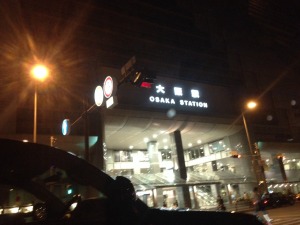
The metro was already closed down for the night. A taxi from Osaka station to Shinsaibashi, a central area of the city, is a short, affordable distance. Although we had already called a capsule hotel – and they had reported no vacancy – we decided to rock up anyway. The night was still young at 1:00AM in Osaka, and takoyaki street vendors were in full action.
In line with our intuition, there were a couple capsules available for us after all. 3000 yen for one night in a pod, fresh sheets and towels, and a shower / bathhouse (complete with sauna) is not bad for Japan (Capsule Hotel Asahi Plaza Shinsaibashi). We booked two nights.
On the third night, we caught a train back up to Kyoto and stayed another night there. I’ll let pictures describe the rest of my stay in Osaka and Kyoto:
KYOTO
KOBE
Kyoto, Osaka, and Kobe are close enough – and cheap enough – by rail. It’s more work than it’s worth to hitch between them. By the time we got on the Tokaido / Sanyo Main line bound for Sannomiya, we had learned that Kansai people stand on the right side of escalators (opposite to Tokyo, where we stand on the left). Staying only one night in Sannomiya, we had picked a service area just outside the city as our base for hitching the next morning. About 15 hours in Kobe was enough time to try some delicious beef (a cheaper variety than the famous stuff, but tasty nonetheless), and hit-up a tucked-away bar. The bartender was so delighted to meet hitchhikers that she gave us drink after drink for free**. By the time we finally escaped, she walked us out to the street and nearly hugged us good-bye. Kobe left a good taste in my mouth.

**she kept our glasses full well over what we paid, but I have a suspicion I paid for at least one more glass than I had officially ordered – likely an honest mistake…
PICK-UP #3 – YOUNG COUPLE GOING RAFTING
Going farther down the Tokaido / Sanyo Main line towards Nishiakashi, we caught a train to little beach town called Suma.
About a block from the station, bus #72 brought us to a middle-of-nowhere stop called Mukai (向井). This is where we trekked about 12 minutes to a wall that blockaded the expressway. We found our 2-meter-high fence and vacationing couple. En route to Shikoku Island for a day of rafting, they took us to Tokushima city.
TOKUSHIMA
By lucky coincidence of a connection through work, I got in touch with a Tokushima local. Passionate about food, he met us in the evening and showed us a delicious traditional restaurant that dated back to the Edo period.
LEAVING TOKUSHIMA BY BOAT
At dinner, our friend-of-a-friend tipped us off that a ferry + train package could get us from Tokushima’s port to Osaka for only 2000 yen. Favoring a new form of transportation to add to our list, we decided to embark on our return route across the bay and through Wakayama.
Bypassing Osaka in train stations only, we took the train all the way to Otsu near Lake Biwa.
HOMEWARD HITCHING: PICK-UP #4 and 5
At Otsu Service Area, we had a time limit now – and less energy – for hitching. The Thursday afternoon was less fruitful than our lucky catches before. Nonetheless, we were picked up after a few hours. A couple took us as far as Nagashima Spa-land, just outside Nagoya. From a highway rest stop there, our situation began to look bleak. Only bus-fuls of tourists poured past us. Where were the people with cars? After 6pm, we began to assess our options. The nearest train station was 7 kilometers away…. We needed to hitch. Without luck, an uncomfortable night at the rest stop might have been our fate.
MORE bus-fuls of tourists….
Finally, a man in a work van pulled up. We stopped him as he crossed our path and asked if he was bound in Tokyo’s direction. Hesitant at first, he said he wasn’t going that far. However, we were able to negotiate a lift to Toyohashi station in Aichi, so we took it. The man may not have been the type to initially pick up hitchhikers. After an hour or more chatting on the highway, we left him with some Kyoto yatsuhashi sweets. I hope we made a lasting impression.
TOYOHASHI to TOKYO
Ideally, we could have caught an overnight bus, the “moonlight nagara” midnight train, or rigged another cheap way to make it home. However, with Obon holiday season and full reservations, we had to bite the bullet. Literally, an 8200 yen bullet-train back to Tokyo was our only option. Unsurprisingly though, it was extremely comfortable to be delivered back to the metropolis in just over an hour. Situation makes some expenses worth it.
ON HITCHHIKING
Would I do it the same way in a different country? Probably not. I’ve come to trust Japan as a generally safe place. There is risk in everything. There is risk in climbing rocks, driving, eating… even in breathing.
My goal in hitching was more than just to catch a free ride. I truly hope that both parties walk away with a positive sense of humanity. Someday, if the opportunity provides, I might pick up a hitchhiker myself.
In the city, there are a million moments a day when I walk past strangers – other minds making their way through this world, same as me – and I never stop. I never know them. The world is full of a human landscape much more slippery and unpredictable than the mountains or the sea. Mottainai. It’s a waste not to explore it.
Would you pick me up?
(Link to my travel companion’s blog: http://lightscameratravel.com/)
The gradient
June 4, 2014
We connect
the dots on a graph
with straight lines.
But between them
there is a story to tell
There was a line
between this one
in the text
but it didn’t rhyme
with the rest.
Our eyes
like small telescopes
dart from here to there
only able to focus
on one thing, then the next
And in this moment
There is another time
running
alongside
that could have been
I play a minor key
A sharp, a flat…
but there are more tones
between white
and black.
There are notes
between notes
and life between thoughts
and no spaces
inallofthefolds…
Yet in the pauses
between words
and wars between urge
There is love.
and love does not cancel love,
I believe
